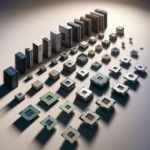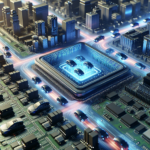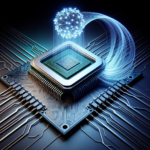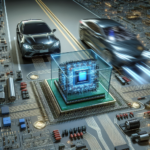The Role of CPUs in Autonomous Drones
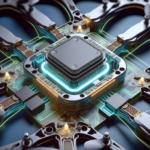
The Role of CPUs in Autonomous Drones
Autonomous drones have revolutionized various industries, from agriculture and logistics to surveillance and entertainment. At the heart of these sophisticated machines lies the Central Processing Unit (CPU), a critical component that orchestrates the myriad of tasks required for autonomous operation. This article delves into the role of CPUs in autonomous drones, exploring their functions, importance, and the technological advancements that make them indispensable.
Understanding Autonomous Drones
What Are Autonomous Drones?
Autonomous drones, also known as unmanned aerial vehicles (UAVs), are aircraft that operate without human intervention. These drones are equipped with advanced sensors, cameras, and software that enable them to perform complex tasks such as navigation, obstacle avoidance, and data collection. The autonomy of these drones is made possible by sophisticated algorithms and powerful processing units.
Key Components of Autonomous Drones
Autonomous drones consist of several key components, each playing a vital role in their operation:
- Frame: The structural body that houses all other components.
- Motors and Propellers: Provide thrust and control for flight.
- Battery: Powers the drone and its components.
- Sensors: Include GPS, accelerometers, gyroscopes, and cameras for navigation and data collection.
- Communication Systems: Enable data transmission between the drone and ground control.
- CPU: The brain of the drone, responsible for processing data and executing commands.
The Central Processing Unit (CPU)
What Is a CPU?
The Central Processing Unit (CPU) is the primary component of a computer that performs most of the processing inside a computer. In the context of autonomous drones, the CPU is responsible for executing the software algorithms that control the drone’s behavior. It processes data from sensors, makes decisions based on that data, and sends commands to the drone’s motors and other components.
Functions of the CPU in Autonomous Drones
The CPU in an autonomous drone performs several critical functions:
- Data Processing: The CPU processes data from various sensors, including GPS, accelerometers, gyroscopes, and cameras. This data is used to determine the drone’s position, speed, orientation, and other parameters.
- Navigation: The CPU uses algorithms to calculate the optimal path for the drone to follow. This includes waypoint navigation, obstacle avoidance, and route optimization.
- Control Systems: The CPU executes control algorithms that adjust the drone’s motors and control surfaces to maintain stable flight and achieve desired maneuvers.
- Communication: The CPU manages communication with ground control stations, other drones, and external systems. This includes transmitting telemetry data and receiving commands.
- Autonomous Decision-Making: The CPU uses artificial intelligence (AI) and machine learning (ML) algorithms to make real-time decisions based on sensor data. This enables the drone to adapt to changing conditions and perform complex tasks autonomously.
Technological Advancements in Drone CPUs
Increased Processing Power
Modern CPUs have significantly higher processing power compared to their predecessors. This increased power allows drones to process large amounts of data in real-time, enabling more sophisticated algorithms and improved performance. Multi-core processors and parallel processing techniques further enhance the capabilities of drone CPUs.
Energy Efficiency
Energy efficiency is a critical consideration for autonomous drones, as they rely on battery power for operation. Advances in CPU design have led to more energy-efficient processors that consume less power while delivering high performance. This extends the flight time of drones and allows them to perform longer missions.
Integration with AI and ML
The integration of AI and ML algorithms into drone CPUs has opened up new possibilities for autonomous operation. These algorithms enable drones to learn from their environment, adapt to changing conditions, and perform complex tasks with minimal human intervention. AI-powered CPUs can process vast amounts of data from sensors and make intelligent decisions in real-time.
Edge Computing
Edge computing involves processing data locally on the drone rather than relying on cloud-based servers. This reduces latency and allows for faster decision-making. Modern CPUs are capable of handling edge computing tasks, enabling drones to operate more efficiently and autonomously in real-time.
Applications of Autonomous Drones
Agriculture
In agriculture, autonomous drones are used for crop monitoring, soil analysis, and precision farming. The CPU processes data from multispectral cameras and other sensors to assess crop health, detect pests, and optimize irrigation and fertilization.
Logistics and Delivery
Autonomous drones are being used for package delivery and logistics. The CPU calculates optimal delivery routes, navigates through urban environments, and ensures safe and efficient delivery of packages.
Surveillance and Security
In surveillance and security applications, autonomous drones are used for monitoring large areas, detecting intrusions, and providing real-time video feeds. The CPU processes video data, performs object detection, and triggers alerts when necessary.
Environmental Monitoring
Autonomous drones are used for environmental monitoring, including wildlife tracking, forest management, and pollution detection. The CPU processes data from various sensors to monitor environmental conditions and provide valuable insights.
Challenges and Future Directions
Challenges
Despite the advancements in CPU technology, there are several challenges that need to be addressed:
- Power Consumption: Balancing processing power with energy efficiency remains a challenge. High-performance CPUs can drain batteries quickly, limiting flight time.
- Heat Dissipation: Powerful CPUs generate heat, which can affect the performance and reliability of the drone. Effective cooling solutions are needed to manage heat dissipation.
- Real-Time Processing: Autonomous drones require real-time processing capabilities to make split-second decisions. Ensuring low latency and high reliability is crucial for safe operation.
- Security: Protecting the CPU and the drone’s software from cyber threats is essential to prevent unauthorized access and ensure safe operation.
Future Directions
The future of autonomous drones is promising, with several exciting developments on the horizon:
- Quantum Computing: Quantum computing has the potential to revolutionize data processing, enabling drones to perform complex calculations at unprecedented speeds.
- Neuromorphic Computing: Neuromorphic computing mimics the human brain’s neural networks, offering new possibilities for AI and ML algorithms in autonomous drones.
- Advanced AI Algorithms: Continued advancements in AI and ML algorithms will enable drones to perform even more complex tasks with greater autonomy and efficiency.
- Improved Energy Storage: Advances in battery technology and energy storage solutions will extend the flight time of autonomous drones, allowing for longer missions and greater capabilities.
FAQ
What is the role of the CPU in an autonomous drone?
The CPU in an autonomous drone is responsible for processing data from sensors, executing control algorithms, managing communication, and making real-time decisions. It acts as the brain of the drone, enabling it to operate autonomously.
How does the CPU process data from sensors?
The CPU receives data from various sensors, such as GPS, accelerometers, gyroscopes, and cameras. It processes this data using algorithms to determine the drone’s position, speed, orientation, and other parameters. This information is used to navigate, avoid obstacles, and perform tasks.
Why is energy efficiency important for drone CPUs?
Energy efficiency is crucial for drone CPUs because drones rely on battery power for operation. More energy-efficient CPUs consume less power, extending the flight time of the drone and allowing it to perform longer missions.
What are the challenges faced by drone CPUs?
Challenges faced by drone CPUs include balancing processing power with energy efficiency, managing heat dissipation, ensuring real-time processing capabilities, and protecting against cyber threats.
What advancements are expected in the future for drone CPUs?
Future advancements for drone CPUs include quantum computing, neuromorphic computing, advanced AI algorithms, and improved energy storage solutions. These developments will enhance the capabilities and autonomy of drones.
Conclusion
The CPU plays a pivotal role in the operation of autonomous drones, enabling them to process data, navigate, make decisions, and perform complex tasks with minimal human intervention. Technological advancements in CPU design, AI integration, and energy efficiency have significantly enhanced the capabilities of autonomous drones. As we look to the future, continued innovation in CPU technology will drive further advancements in drone autonomy, opening up new possibilities and applications across various industries.

